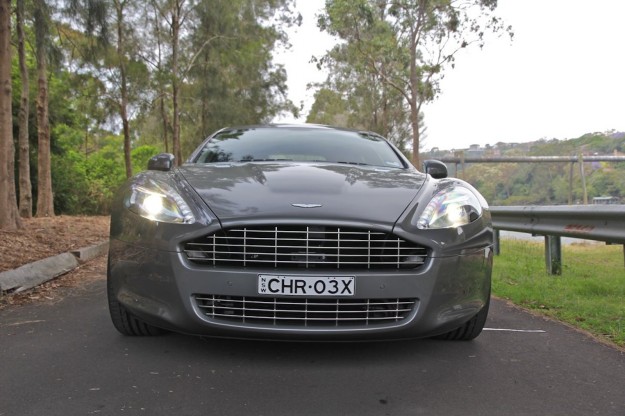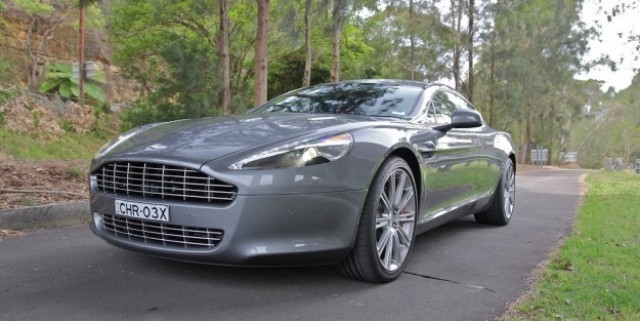
The Aston Martin Rapide is one of seven fast four-doors available for buyers with about $380,000 crammed in their back pocket, so it’s fair to say that it needs to make a convincing case for itself beyond being a sex synonym and sharing space on a Daniel Craig pin-up.
Made in Austria since its launch in 2010, Rapide production has as of last year moved to the UK. It’s built on a stretched and upgraded version of the company’s rear-wheel-drive platform, codenamed ‘VH’, which debuted in the 2004 DB9.
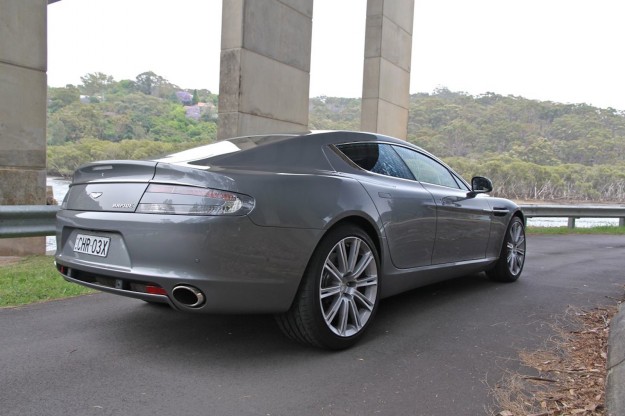
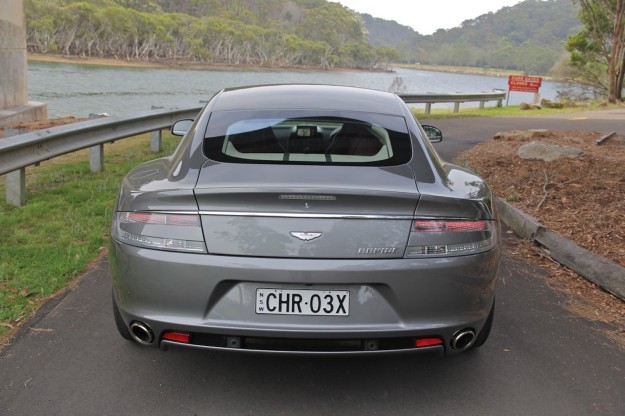
At 5.02 metres long, the Aston Martin stretches beyond a Commodore, yet it seats only two in the back seat, offering as much rear legroom as a BMW 1 Series coupe, and packs a 317-litre boot – smaller than that in a VW Golf.
So the $371,300 Aston Martin Rapide isn’t exactly the practical choice, and it certainly isn’t a limousine, even if the metal-for-the-money equation is there. Weighing in at 1950kg, however, only the Jaguar XJ Supersports is lighter (at 1915kg), not coincidentally because both cars are constructed out of aluminium. Most steel-constructed rivals wind the scales past two tonnes – including the 2525kg Bentley Continental Flying Spur, 2175kg BMW 760Li, and 2120kg Mercedes-Benz S63 AMG – while the 1970kg Porsche Panamera Turbo and 1990kg Maserati Quattroporte are not far off.
Nothing succeeds in shifting weight like excess power, however. The Rapide has plenty from its 5.9-litre V12, the full 350kW and 600Nm filtering through a six-speed automatic to the rear wheels to achieve a 5.2 second 0-100km/h. Admittedly, those numbers aren’t particularly efficient considering the size of the engine, nor is the performance number as scorching as some in the class – an S63 AMG will get to 100km/h in 4.5 seconds; the Panamera Turbo in 3.9sec.
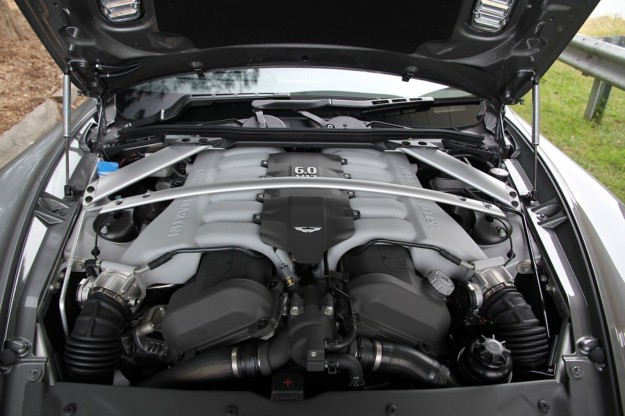
The Rapide’s 14.9L/100km claimed economy also pales alongside those rivals – Merc’s 10.6L/100km, Porsche’s 12.2L/100km – and blew out even further on test, to 20L/100km.
Despite the long front overhang with its aggressive shark-like nose, most of the engine sits behind the front axle line, which is good for dynamics. It also brings the glorious-sounding V12 a little closer to occupants. This is one of the world’s best-sounding engines, and more decibels are to be discovered when the sports exhaust button is pressed.
Beyond the sound, the Rapide connects to its driver via a brilliant speed-sensitive power steering system that boasts just 2.75 turns lock to lock. As light and effortless as most small cars around town, the steering reveals true precision and alacrity during hard driving.
The Aston also feels smaller than it is, and is wonderfully light on its feet, despite its SUV-like girth. The six-speed automatic is fluent and intuitive, melding into the background when commuting and then stepping up to deliver crisp downshifts when using the steering wheel-mounted paddle shifters in manual mode. A single gripe is that in auto-Sport mode, the gearbox is reluctant to hold lower gears, upshifting early and at inopportune moments.
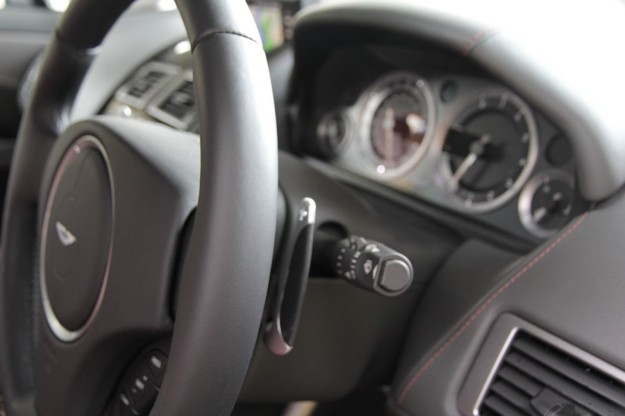
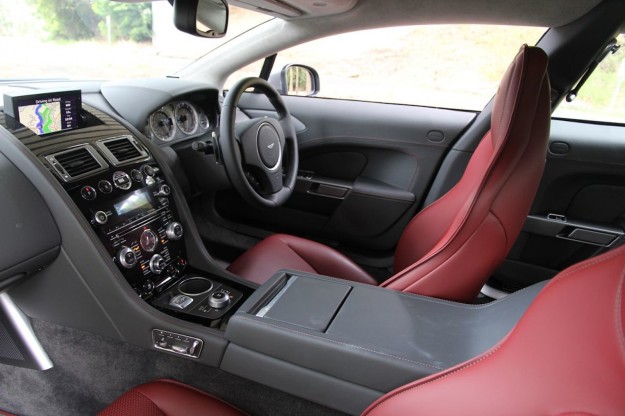
To steer on flowing Australian country roads, the Aston Martin Rapide feels fantastically balanced and intimately rewarding, yet always safe and composed. When the road tightens, the extra-large 20-inch Bridgestone Potenza tyres provide prodigous amounts of grip, and the chassis shows off a remarkable resistance to understeer.
Despite the grip, the superbly calibrated stability control works in concert with the standard mechanical limited-slip differential to permit just a fraction of rear-end movement, which easily occurs when working in the top half of the tachometer and using the throttle – all 600Nm are chanelled to the rear wheels at 5000rpm, and the peak 350kW arrives just 1000 revs higher.
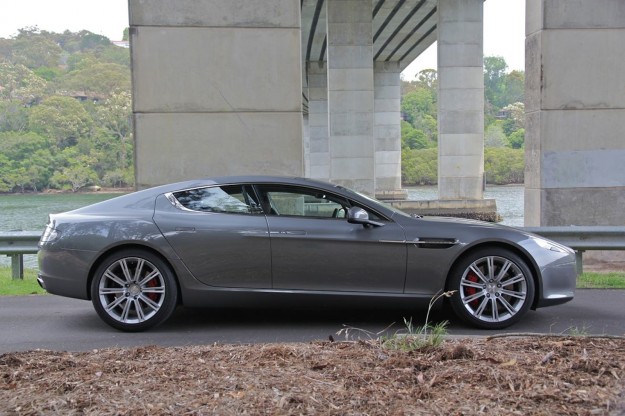
Standard adaptive dampers do a superb job of quelling impacts whatever the surface, ironing out all of the jarring and crashing that often occurs on cars that wear large, low-profile tyres. Around town the Rapide is comfortably compliant, yet on rougher roads also delivers remarkably tight body control.
The Sport mode tightens the suspension, yet it is an only marginally firmer derivation of what is a terrific standard setting. The tighter damping is most noticeable on rougher roads at speed, introducing a bounceiness that means the Sport setting is best left for ultra-smooth roads and racetracks.
When cruising on smooth tar, the level of road noise is minimal, although coarse chip surfaces kick up an awful roar common to many mainstream hatchbacks and almost entirely eliminated in a Mercedes S-Class. Best, then, to turn up the crisp 1000-watt Bang & Olufsen stereo system, which also helps to drown out the complaints from rear passengers.
Although the rear legroom issue is affected further by narrow rear doors that hinder entry and egress, the stitched-leather dashboard and velour headlining continues the (literally) feel-good factor inside. The dash design of the Rapide is borrowed from the now nine-year-old DB9, and some of the Brit brand’s old connection with Ford, Jaguar and Volvo is evident in the blinker stalks and power window switchgear (from a Jag XF) and green dot-matrix display (shared with a Volvo C30).
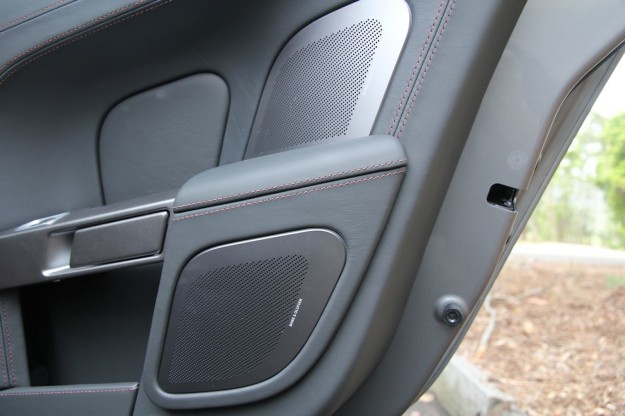
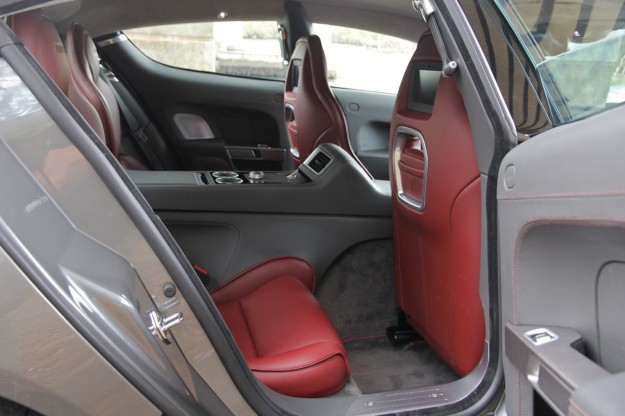
Large yet cramped, not particularly quick and very thirsty, the Aston Martin Rapide sidesteps all sense of pragmatism to truly appeal to the senses. To look at inside and out, hear its epic engine and audio system, and feel the excellence of its steering, ride and handling, it delivers more vivid overall rewards than any of its competitors…
